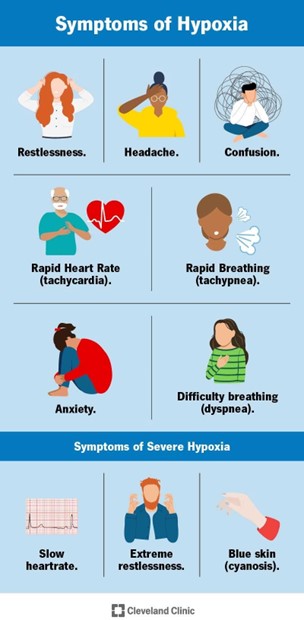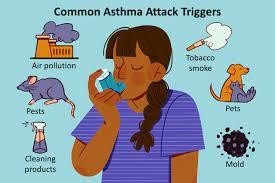The child is a 2-year-old who fell into a pool. He was retrieved from the pool by a family member but was not breathing. The family member started CPR, and the ambulance brought him to the hospital.
What factors are important in determining the level of hypoxemia that the child may have experienced during the submersion?
Select all that apply.
Temperature of water
The weight of the child
Oxygen concentration of the ambient air
Whether or not anyone witnessed the fall into the pool
The amount of time the child was submerged
Correct Answer : A,E
The level of hypoxemia that the child may have experienced during the submersion depends on several factors, but the most important ones are:
- The **temperature of water**: Cold water can induce a diving reflex, which lowers the heart rate and oxygen consumption, and may protect the brain from hypoxic injury¹². Cold water can also cause laryngospasm, which prevents water aspiration but also impairs gas exchange.
- The **amount of time the child was submerged**: The longer the submersion, the more severe the hypoxemia and the higher the risk of brain damage and death. The survival rate decreases significantly after 5 minutes of submersion³.
The other factors are less relevant or not directly related to the level of hypoxemia:
- The **weight of the child**: This may affect the buoyancy and the ability to float or swim, but not the oxygen consumption or gas exchange during submersion¹.
- The **oxygen concentration of the ambient air**: This may affect the pre-submersion oxygen saturation, but not the rate of oxygen depletion or gas exchange during submersion¹.
- The **witnessing of the fall into the pool**: This may affect the time to rescue and resuscitation, but not the level of hypoxemia during submersion.

Nursing Test Bank
Naxlex Comprehensive Predictor Exams
Related Questions
Correct Answer is ["A","D","E"]
Explanation
A) Correct- Continuous monitoring of oxygen saturation ensures the client's oxygen levels remain within an acceptable range.
B) Incorrect - Discussing aggressive respiratory treatment options is not warranted based on the provided information. The current treatment plan includes appropriate interventions.
C) Incorrect - Obtaining a sputum culture is important for identifying infections, but it's not an immediate action in the context of the client's current symptoms.
D) Correct- Promoting comfort can help reduce anxiety and potentially improve breathing.
E) Correct- Educating the client about potential triggers supports better self-management.
F) Incorrect - Considering positive pressure ventilation is not indicated at this stage. The client's symptoms are being managed with other interventions.
G) Incorrect - Weaning supplemental oxygen is not mentioned in the patient data or nurses' notes as something that's currently necessary.
H) Incorrect - Preparing for deep tracheal suctioning is not warranted based on the patient data and the current treatment plan.

Correct Answer is B
Explanation
- Urinary output is an important indicator of fluid balance and kidney function. After delivery, a woman may experience increased urinary output due to the loss of excess fluid that was retained during pregnancy and the diuretic effect of oxytocin, which is released during breastfeeding. This is a normal and expected finding in the postpartum period.
- However, increased urinary output may also be a sign of urinary retention, which is the inability to empty the bladder completely. Urinary retention can occur due to trauma to the bladder or urethra during delivery, swelling or hematoma of the perineum, epidural anesthesia, or decreased bladder sensation. Urinary retention can lead to complications such as infection, bladder distension, or postpartum hemorrhage.
- Therefore, when a woman who delivered a normal newborn 24 hours ago reports that she seems to be urinating every hour or so, the practical nurse (PN) should measure the next voiding, and then palpate the client's bladder. This will help to assess the amount and quality of urine and the presence or absence of bladder distension. A normal urine output is about 30 ml per hour, and a normal bladder should feel soft and empty after voiding. If the urine output is low or high, or if the bladder feels firm or full after voiding, the PN should report these findings to the primary healthcare provider for further evaluation and intervention.
Therefore, option B is the correct answer, while options A, C, and D are incorrect.
Option A is incorrect because catheterizing the client for residual urine volume is an invasive procedure that should only be done if indicated by the primary healthcare provider.
Option C is incorrect because evaluating for normal involution and massaging the fundus are related to uterine function, not urinary function.
Option D is incorrect because obtaining a specimen for urine culture and sensitivity is not necessary unless there are signs of infection, such as fever, dysuria, or foul-smelling urine.
Whether you are a student looking to ace your exams or a practicing nurse seeking to enhance your expertise , our nursing education contents will empower you with the confidence and competence to make a difference in the lives of patients and become a respected leader in the healthcare field.
Visit Naxlex, invest in your future and unlock endless possibilities with our unparalleled nursing education contents today
Report Wrong Answer on the Current Question
Do you disagree with the answer? If yes, what is your expected answer? Explain.
Kindly be descriptive with the issue you are facing.
